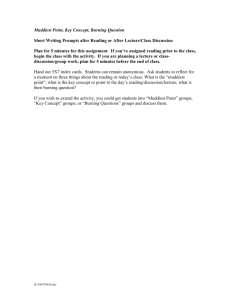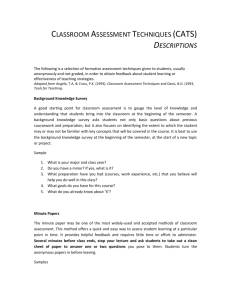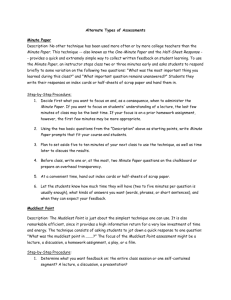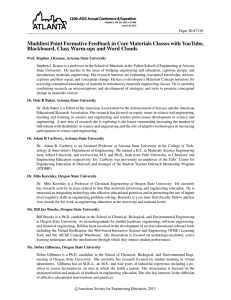Muddiest Point - HSH Lombardia
advertisement
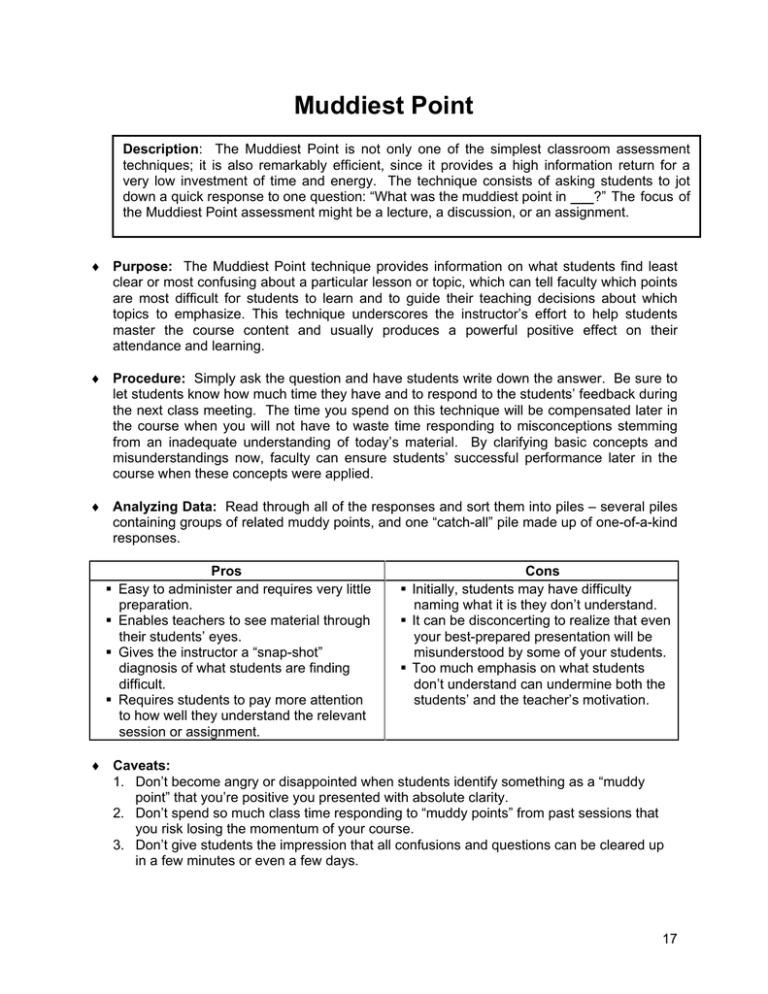
Muddiest Point Description: The Muddiest Point is not only one of the simplest classroom assessment techniques; it is also remarkably efficient, since it provides a high information return for a very low investment of time and energy. The technique consists of asking students to jot down a quick response to one question: “What was the muddiest point in ?” The focus of the Muddiest Point assessment might be a lecture, a discussion, or an assignment. ♦ Purpose: The Muddiest Point technique provides information on what students find least clear or most confusing about a particular lesson or topic, which can tell faculty which points are most difficult for students to learn and to guide their teaching decisions about which topics to emphasize. This technique underscores the instructor’s effort to help students master the course content and usually produces a powerful positive effect on their attendance and learning. ♦ Procedure: Simply ask the question and have students write down the answer. Be sure to let students know how much time they have and to respond to the students’ feedback during the next class meeting. The time you spend on this technique will be compensated later in the course when you will not have to waste time responding to misconceptions stemming from an inadequate understanding of today’s material. By clarifying basic concepts and misunderstandings now, faculty can ensure students’ successful performance later in the course when these concepts were applied. ♦ Analyzing Data: Read through all of the responses and sort them into piles – several piles containing groups of related muddy points, and one “catch-all” pile made up of one-of-a-kind responses. Pros Easy to administer and requires very little preparation. Enables teachers to see material through their students’ eyes. Gives the instructor a “snap-shot” diagnosis of what students are finding difficult. Requires students to pay more attention to how well they understand the relevant session or assignment. Cons Initially, students may have difficulty naming what it is they don’t understand. It can be disconcerting to realize that even your best-prepared presentation will be misunderstood by some of your students. Too much emphasis on what students don’t understand can undermine both the students’ and the teacher’s motivation. ♦ Caveats: 1. Don’t become angry or disappointed when students identify something as a “muddy point” that you’re positive you presented with absolute clarity. 2. Don’t spend so much class time responding to “muddy points” from past sessions that you risk losing the momentum of your course. 3. Don’t give students the impression that all confusions and questions can be cleared up in a few minutes or even a few days. 17

